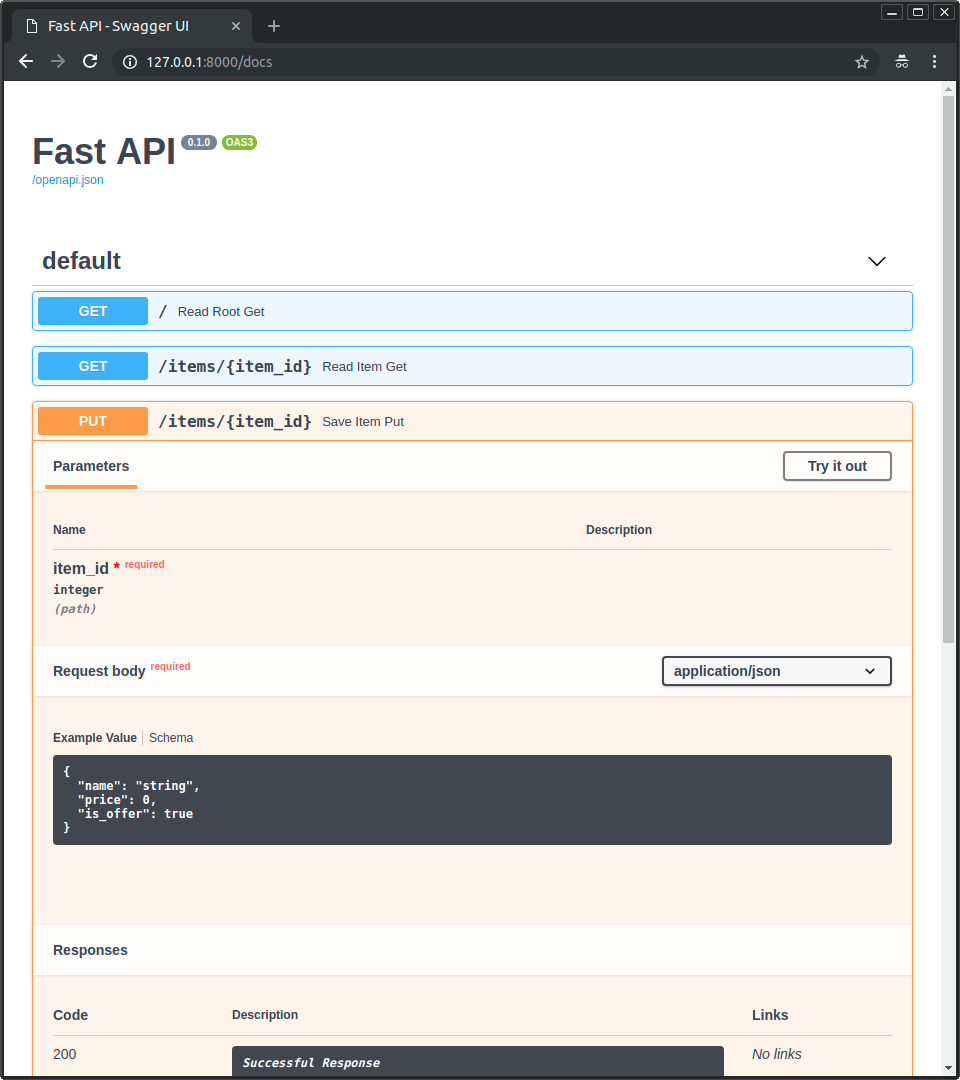- Sort Score
- Result 10 results
- Languages All
Results 111 - 120 of 2,305 for api2 (0.03 sec)
-
docs/de/docs/deployment/concepts.md
In den nächsten Kapiteln werde ich Ihnen mehr **konkrete Rezepte** für die Bereitstellung von FastAPI-Anwendungen geben. Aber schauen wir uns zunächst einmal diese grundlegenden **konzeptionellen Ideen** an. Diese Konzepte gelten auch für jede andere Art von Web-API. 💡 ## Sicherheit – HTTPS
Registered: Sun Sep 07 07:19:17 UTC 2025 - Last Modified: Sun May 11 13:37:26 UTC 2025 - 20.6K bytes - Viewed (0) -
docs/es/docs/advanced/openapi-webhooks.md
Hay casos donde quieres decirle a los **usuarios** de tu API que tu aplicación podría llamar a *su* aplicación (enviando una request) con algunos datos, normalmente para **notificar** de algún tipo de **evento**. Esto significa que en lugar del proceso normal de tus usuarios enviando requests a tu API, es **tu API** (o tu aplicación) la que podría **enviar requests a su sistema** (a su API, su aplicación). Esto normalmente se llama un **webhook**.
Registered: Sun Sep 07 07:19:17 UTC 2025 - Last Modified: Mon Dec 30 18:26:57 UTC 2024 - 3K bytes - Viewed (0) -
guava/src/com/google/common/util/concurrent/SettableFuture.java
* utility methods, or {@link ListenableFutureTask}. Those APIs have less opportunity for developer * error. If your needs are more complex than {@code SettableFuture} supports, use {@link * AbstractFuture}, which offers an extensible version of the API. * * @author Sven Mawson * @since 9.0 (in 1.0 as {@code ValueFuture}) */ @GwtCompatibleRegistered: Fri Sep 05 12:43:10 UTC 2025 - Last Modified: Sun Dec 22 03:38:46 UTC 2024 - 2.3K bytes - Viewed (0) -
docs/en/docs/advanced/openapi-webhooks.md
There are cases where you want to tell your API **users** that your app could call *their* app (sending a request) with some data, normally to **notify** of some type of **event**. This means that instead of the normal process of your users sending requests to your API, it's **your API** (or your app) that could **send requests to their system** (to their API, their app). This is normally called a **webhook**.
Registered: Sun Sep 07 07:19:17 UTC 2025 - Last Modified: Sun Aug 31 09:15:41 UTC 2025 - 2.9K bytes - Viewed (0) -
RELEASE.md
support and new features. * **API not found.** The new optimizer has a different set of public APIs from the old optimizer. These API changes are mostly related to getting rid of slot variables and TF1 support. Please check the API documentation to find alternatives to the missing API. If you must call the deprecated API, please change your optimizer to the legacy optimizer.Registered: Tue Sep 09 12:39:10 UTC 2025 - Last Modified: Mon Aug 18 20:54:38 UTC 2025 - 740K bytes - Viewed (1) -
docs/ko/docs/features.md
* 이는 또한 다양한 언어로 자동적인 **클라이언트 코드 생성**을 사용할 수 있게 지원합니다. ### 문서 자동화 대화형 API 문서와 웹 탐색 유저 인터페이스를 제공합니다. 프레임워크가 OpenAPI를 기반으로 하기에, 2가지 옵션이 기본적으로 들어간 여러 옵션이 존재합니다. * 대화형 탐색 <a href="https://github.com/swagger-api/swagger-ui" class="external-link" target="_blank"><strong>Swagger UI</strong></a>를 이용해, 브라우저에서 바로 여러분의 API를 호출하거나 테스트할 수 있습니다. 
Registered: Sun Sep 07 07:19:17 UTC 2025 - Last Modified: Sat Nov 09 16:39:20 UTC 2024 - 11.8K bytes - Viewed (0) -
okhttp/build.gradle.kts
dependsOn(commonMain.get()) kotlin.srcDir(copyKotlinTemplates.map { it.outputs }) kotlin.srcDir(generateIdnaMappingTable.map { it.outputs }) dependencies { api(libs.squareup.okio) api(libs.kotlin.stdlib) compileOnly(libs.animalsniffer.annotations) } } commonTest { dependencies { implementation(projects.okhttpTestingSupport)
Registered: Fri Sep 05 11:42:10 UTC 2025 - Last Modified: Thu Jul 03 03:59:03 UTC 2025 - 9.4K bytes - Viewed (0) -
cmd/admin-handler-utils.go
return nil, cred } } writeErrorResponseJSON(ctx, w, errorCodes.ToAPIErr(ErrAccessDenied), r.URL) return nil, auth.Credentials{} } // AdminError - is a generic error for all admin APIs. type AdminError struct { Code string Message string StatusCode int } func (ae AdminError) Error() string { return ae.Message }
Registered: Sun Sep 07 19:28:11 UTC 2025 - Last Modified: Wed Jul 03 07:17:20 UTC 2024 - 8.4K bytes - Viewed (0) -
docs/en/docs/deployment/concepts.md
By considering these concepts, you will be able to **evaluate and design** the best way to deploy **your own APIs**. In the next chapters, I'll give you more **concrete recipes** to deploy FastAPI applications. But for now, let's check these important **conceptual ideas**. These concepts also apply to any other type of web API. 💡 ## Security - HTTPS { #security-https }
Registered: Sun Sep 07 07:19:17 UTC 2025 - Last Modified: Sun Aug 31 09:15:41 UTC 2025 - 18.6K bytes - Viewed (0) -
docs/en/docs/benchmarks.md
The hierarchy is like: * **Uvicorn**: an ASGI server * **Starlette**: (uses Uvicorn) a web microframework * **FastAPI**: (uses Starlette) an API microframework with several additional features for building APIs, with data validation, etc. * **Uvicorn**: * Will have the best performance, as it doesn't have much extra code apart from the server itself.Registered: Sun Sep 07 07:19:17 UTC 2025 - Last Modified: Sun Aug 31 09:15:41 UTC 2025 - 3.5K bytes - Viewed (0)